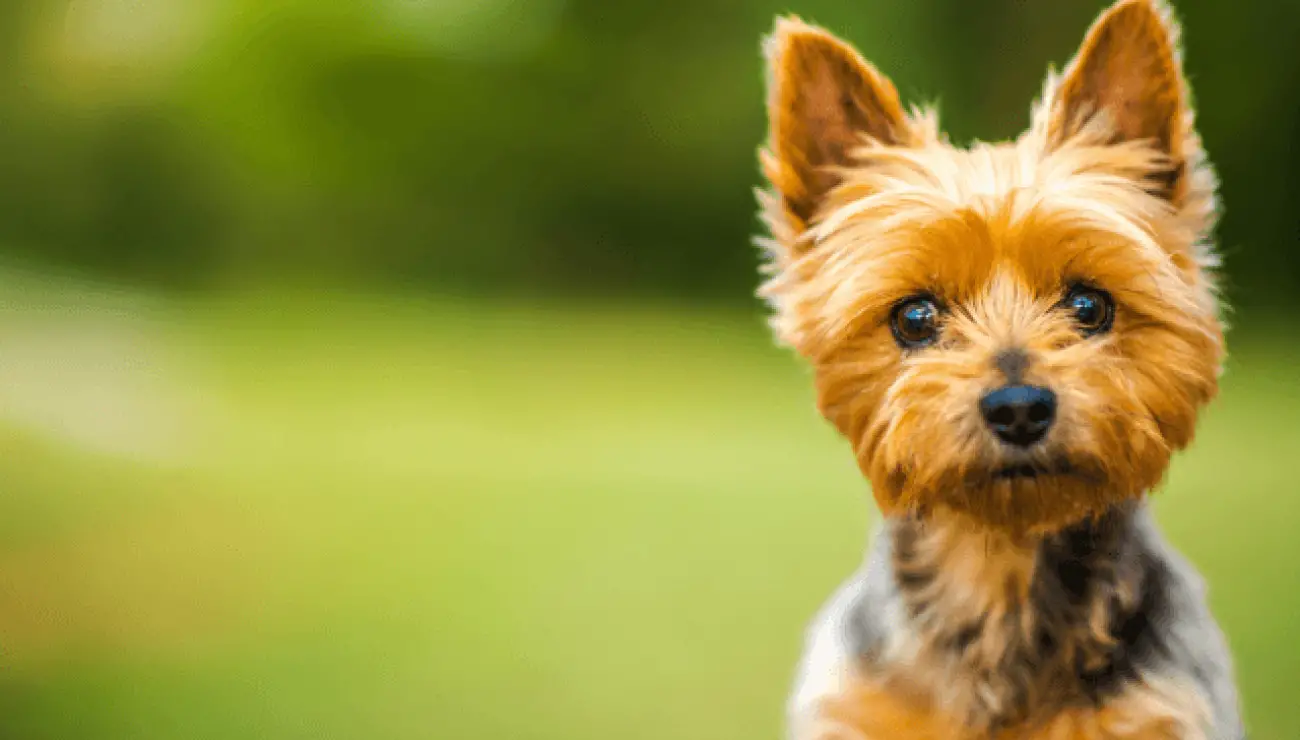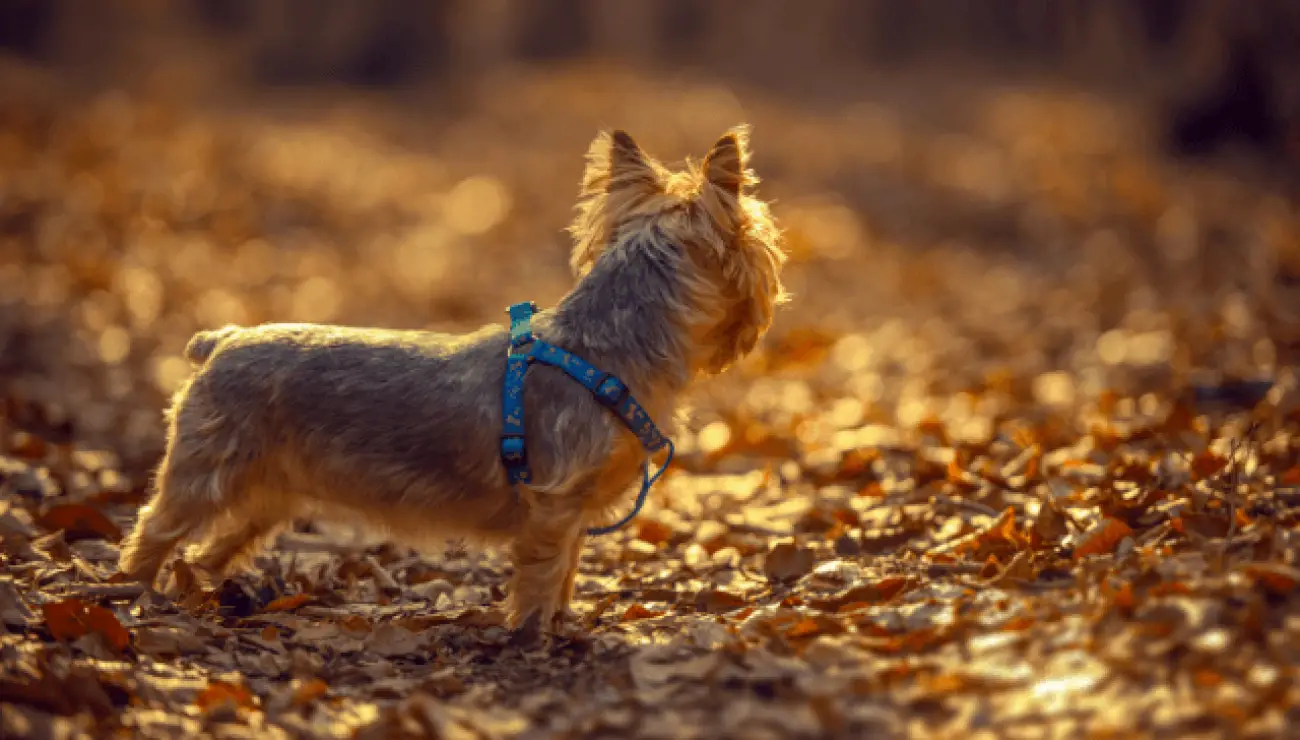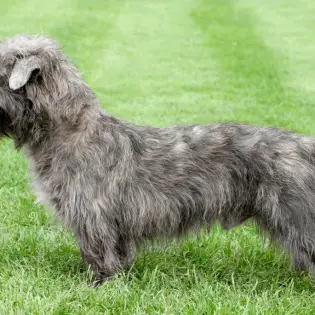Silky Terrier
The Silky Terrier is a friendly, compact, and energetic small dog breed originating in Sydney, Australia. They are closely related to the Yorkshire Terriers and Australian Terriers. In the US, these dogs are called Silky Terriers, but in their everywhere else in the world, they're called Australian Silky Terriers.
These dogs can best be described as small dogs with big personalities. They are loving companions that will love to spend their time next to their owner. They are very adaptable dogs and can learn to live in an apartment as long s you provide them with enough activities.

Height:
9–10 in (23–26 cm)

Weight:
8-11 lb (4-5 kg)

Origin:
Australia

Life Expectancy:
13-15 years
Dog Breed Characteristics
Breed appearance
The Silky Terrier should be slightly taller than Long. These dogs should have a sporty build that confirms their toy dog status. In fact, this breed should have characteristics that allow them to go hunting for rats and other small pests.
It is, however, a toy in terms of size, weighing only 8 - 11 pounds and reaching a height of only 9 - 10 inches. Their ears should be small and standing upright and have pointed tips. The standard says their almond-shaped eyes are small. The skull has a shallow stop and is flat. The tail has been docked and is being carried high.
One of the Silky’s most distinguishing characteristics is its coat. It's straight, silky, and gleaming. Instead of flowing to the ground like a Yorkshire Terrier's coat, it conforms to the Silky compact body shape.

Temperament
The Silky Terrier is a lively and spirited companion who is confident and friendly. It is a high-energy individual who thrives in the company of a dedicated owner. Silky enjoys being active, so expect him to accompany you on your daily activities. Even though these dogs are only about 10 pounds, they have the heart of a watchdog and will bark an alert if they believe it is necessary.
To clarify, the Silky is everything a terrier should be: alert and intelligent. Their natural demeanor is quick, friendly, and responsive; they are not shy or nervous.
The Silky Terrier possesses a special love for digging, which is a bit frustrating for their owners with well-kept lawns. They also enjoy chasing. These dogs should be on a leash whenever they are not in fenced yards or dog parks.
The Silky's can have an assertive temperament (typical for many terrier breeds) that can make them appear dominating at times. That means they require experienced owners who can train them firmly but gently. Future Silky Terrier owners should have the personality of a pack leader with enough will and time to spend training and socializing their dog.

Grooming and care guide
The coat of this breed is stunning: long and sleek, parted down the back, and hanging 5 - 6 inches down. The color is a rich tan with blue undertones. You might think of the Silky as a complicated breed when it comes to grooming, but they aren’t. Brushing and combing twice a week (and before bathtime) will keep your Silky clean and tangle-free, as will a bath once a month or so.
Brush your Silky's teeth at least twice a week to remove tartar and the bacteria that live there. Brushing twice a day is even better if you want to avoid gum disease and bad breath.
Trim your dog's nails once or twice a month if they don’t wear them down naturally to avoid painful tears and other issues. Dog toenails contain blood vessels, and if you cut too deeply, you may cause bleeding, and your dog may refuse to cooperate the next time the nail clippers come out. So, if you're not used to trimming your dog’s nails, seek advice from a vet or groomer.
The dog’s ears should be checked weekly for redness or odor, which can indicate an infection. When cleaning your dog's ears, use a cotton ball dampened with a gentle, pH-balanced ear cleaner. That will help prevent infections. Do not insert anything into the ear canal. The only safe thing is to clean the outside of the ear.
When your Silky is a puppy, start accustoming them to being brushed and examined. Handle their paws frequently. Make sure you check the inside of their mouths. Make grooming a pleasurable experience full of praise and rewards. This is a great way to create fantastic foundations for future veterinary exams, grooming, or any handling the dog might need.
When you groom your Silky Terrier, make sure you check for sores, redness, tenderness, rashes, or signs of infection or inflammation on the skin, nose, mouth, eyes, and feet as you groom the dog. There should be no redness or discharge in the eyes. Your thorough weekly examination will assist you in detecting potential health issues early on.

Silky Terrier exercise needs
Silky Terriers require a proper amount of daily activities to be happy and healthy. Long walks, chasing balls, and playing in the park can all do the trick. This dog will happily play inside the house and spend its energy that way.
If you are thinking about getting a Silky Terrier, ensure you have enough free time and energy to spend it outside playing and training your Silky Terrier. If your schedule can’t allow you that, consider getting some less active breed.
Training and socialization
When training Silky, keep in mind you should only use positive training methods. Never use fear, punishment, or pain because not only is it cruel, it can result in an overly shy or even aggressive dog. Be firm, fair, and consistent, but use only positive reinforcement! These dogs are eager to do whatever their people ask of them. Involve as many treats as you can and keep the training sessions interesting.
Socialization can even be done at home. Dress differently; wear glasses, hats, and baggy clothes so your puppy can’t recognize you right away. Teach your puppy to stay alone for a while and don’t make a fuss about it. It is the best way to ensure your puppy will grow up to be a stable, confident, and well-behaved dog.

Silky Terrier and children
Early socialization and proper training can teach them to behave even when children are around. Their temperament makes them more suitable for families with older children. If you train and socialize your Silky Terrier well, your children will get a great playing partner that has plenty of energy. These dogs can play for hours upon hours without getting tired or bored.
Children should never be left alone with any dog, no matter what breed it might be. You should make sure that your children understand how to approach dogs of this breed and safely interact and play with them.
Silky Terrier and other pets
Silky Terriers can get along well with other dogs and enjoy their company. They are not the best fit for other pets. They have a strong prey drive, so they will most likely try and catch smaller animals such as gerbils, hamsters, squirrels, or rabbits. They can learn to get along with the pets they are raised with, but our advice would be never to leave them unattended.
Health
Like any other dog breed, the Silky Terrier can potentially develop health problems. If you are buying a dog, make sure the breeder can provide you with the necessary health tests and guarantees. Always ask to see the results of tests from the puppy’s parents. The Silky Terrier is generally considered a very healthy breed that can live 13 - 15 years.

Health problems associated with this breed are;
- Epilepsy - Brain problem causing mild to severe seizures.
- Patellar luxation
- Legg-Calve-Perthes disease
- Tracheal collapse
Silky Terrier Breeders
This dog breed is not for everyone, and we advise you to do your research before going after Silky Terrier. You will need to dedicate your time and energy to training and socialization if you want to end up with a dog you can control.
When you search for Silky Terrier breeders, always buy a dog from a responsible and official breeder. By doing so, you can be sure that you will get the best possible dog because a good breeder takes good care of their breeding dogs and their puppies.
If you have any questions or doubts, any good breeder will welcome your questions because they want their puppies to go into a good and knowledgeable home.
World Dog Finder team

Updated at31.08.2023.
Breed History
In the 1890s, breeders in Australia crossed imported Yorkshire Terriers with native Australian Terriers to create the Silky Terrier. Some of the offspring resembled Yorkies; others resembled Australian Terriers. Some puppies were born with a size and coat length between the two parent breeds. They were used as breeding stock for the future breed.
The Silky-looking puppies were interbred until the puppies exhibited predictable Silky characteristics.
In Sydney in 1906, breed enthusiasts, breeders, and lovers developed a breed standard - written guidelines for how these dogs’ characteristics, movements, and temperament. Another standard was created in Victoria in 1909. The two standards did not completely correspond, primarily in the preferred weight and ear type. The two camps reached an agreement, and a new breed standard was published in 1926.
The breed has gone by several names, including the Sydney Silky Terrier. The breed was given the name Australian Silky Terrier in 1955. (still the official name for the breed in Australia). The breed was renamed Silky Terrier in the United States.
















Share